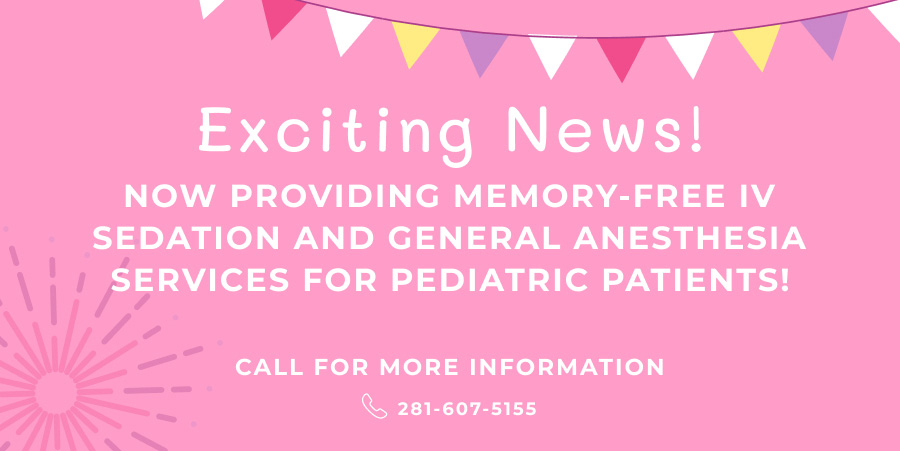Memory-Free IV Sedation, Memory-Free General Anesthesia, Nitrous Oxide (Laughing Gas), Oral Sedation, & More
Dr. Sarah Al Kukash specializes in sedation dentistry for children, which is not common among traditional pediatric dentists. We can help your child relax during their appointment at Specialty Smiles, in a way that allows them to stay awake. Talk to us about your options for your child’s pediatric sedation in Pearland and Manvel, Texas. Call our pediatric dentist at 281-607-5155 to learn more!
Pediatric Conscious Sedation: Helping Your Child Feel Comfortable at the Dentist
Dental visits can be overwhelming for some children, especially those who experience anxiety, have special healthcare needs or require lengthy procedures. Pediatric conscious sedation is a safe and effective way to help your child remain calm and comfortable while receiving necessary dental care. This method allows children to stay awake but deeply relaxed, ensuring a smooth and positive experience.
What Is Pediatric Conscious Sedation?
Pediatric conscious sedation is a controlled technique used to reduce fear and discomfort during dental procedures. Unlike general anesthesia, which renders a patient completely unconscious, conscious sedation allows your child to remain awake while feeling relaxed. This approach is especially beneficial for young patients who may struggle with dental anxiety, strong gag reflexes or difficulty sitting still for extended periods.
Sedation is carefully administered and monitored by trained professionals to ensure your child’s safety. The goal is to create a comfortable environment where your child can receive the necessary treatment without stress or fear.
Types of Pediatric Conscious Sedation
There are several types of conscious sedation used in pediatric dentistry, each tailored to meet the needs of individual patients:
- Nitrous oxide (laughing gas): One of the most commonly used sedatives in pediatric dentistry, nitrous oxide is a mild gas inhaled through a small mask. It helps children feel calm and slightly euphoric while remaining fully responsive. The effects wear off quickly once the procedure is complete.
- Oral sedation: This method involves giving your child a prescribed liquid or pill before their appointment. Oral sedation induces a deeper level of relaxation, making children feel drowsy but still responsive to verbal cues.
- IV sedation: Administered directly into the bloodstream through a small IV, this type of sedation provides a stronger calming effect. It is typically recommended for more complex dental procedures or children with higher levels of anxiety.
What to Expect During and After Sedation
Before sedation, our pediatric dentist will provide specific instructions to ensure a safe and effective experience. This may include dietary restrictions, hydration guidelines and details about what to expect during recovery.
During the procedure, our team will closely monitor your child’s vital signs, including heart rate and oxygen levels, to maintain their safety. Depending on the type of sedation used, your child may feel sleepy or have little memory of the procedure.
After the appointment, your child may feel drowsy for a short time. While nitrous oxide effects wear off quickly, oral and IV sedation may require a longer recovery period. Your child should rest at home and avoid strenuous activities for the remainder of the day.
Is Pediatric Conscious Sedation Safe?
Pediatric conscious sedation is widely recognized as a safe option when administered by experienced dental professionals. Before recommending sedation, our pediatric dentist will review their medical history, assess their needs and determine the best approach. The safety of your child is always the top priority, and sedation is carefully monitored throughout the procedure.
If your child experiences dental anxiety or requires extensive treatment, pediatric conscious sedation may help make their visit more comfortable and stress-free. Speak with our pediatric dentist to learn more about sedation options and how they can support a positive dental experience.







